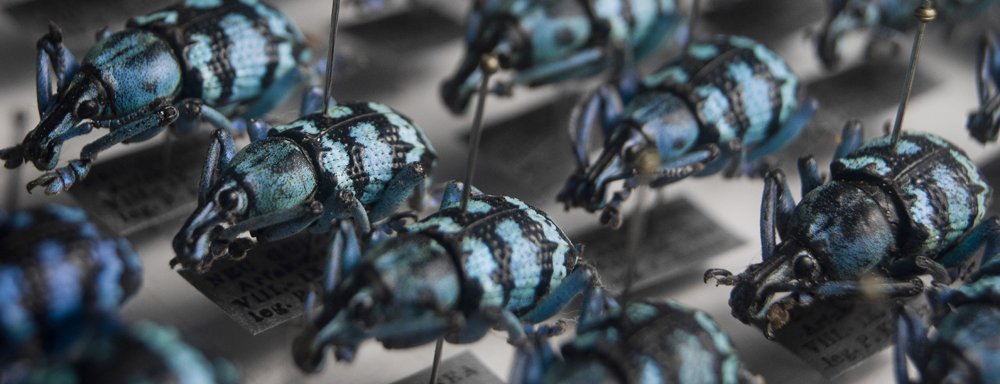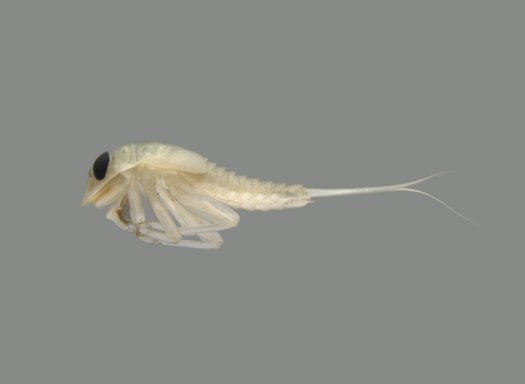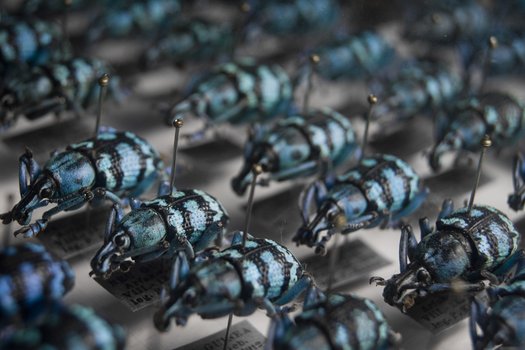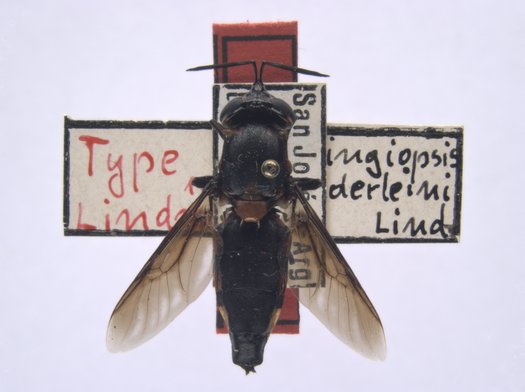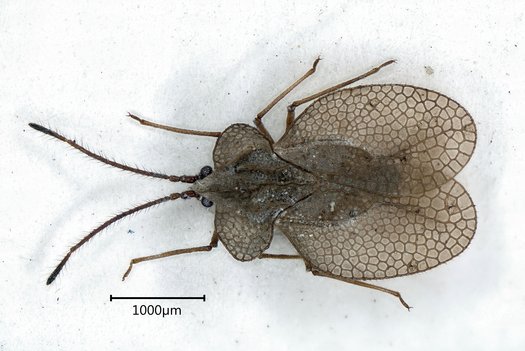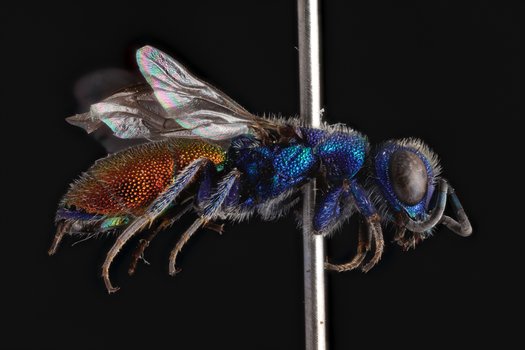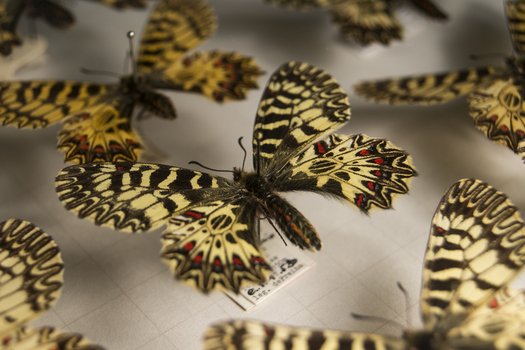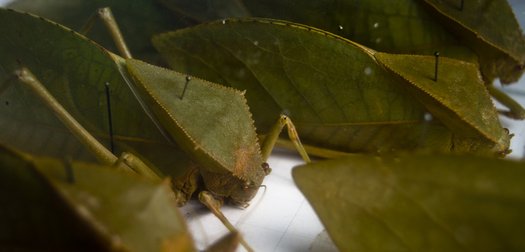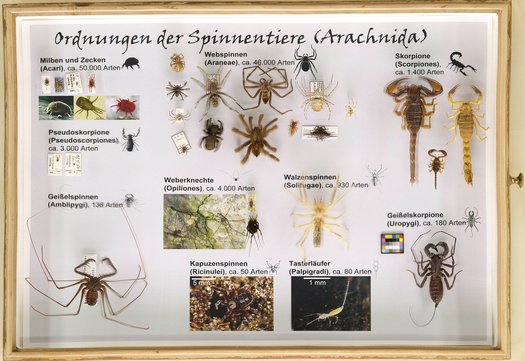Contact: Dr. Arnauld Faille
The beetle comprise the largest insect collection at SMNS with about two million specimens and almost 60,000 species. Its major part was acquired during the last 70 years. Geographical emphasis lies on the Old World, notably Europe, southern Africa, Central Asia, the Himalayan region, and tropical Asia including New Guinea. Its systematic focus encompasses Carabidae, Silphidae, Leiodidae, Prostomidae, Tenebrionidae, Chrysomelidae, and Scarabaeidae. The collection holds about 5000 type series. Local collections of numerous contributors (Böhme, Buck, Gladitsch, Köstlin, Ulbrich, von der Trappen) together form a faunistic reference collection on South German beetles. The beetle collection also includes numerous special collections with a large amount of type material: the collection Puthz on the staphylinid genus Stenus contains 80 holotypes and numerous paratypes. The collections Daffner and Angelini on Leiodidae and the collection Heinz on Carabidae also hold a large amount of type series. Due to the work of Wolfgang Schawaller, a beetle curator at the SMNS from 1983 to 2015 and from 1995 to 2015 also the head of the Entomology Department, the outstanding collection of Tenebrionidae includes 631 type series of 210 species of the genera Laena and Platydema. It also encompasses type material of other specialists on Tenebrionidae, namely, Ando, Bremer, Grimm, and Masumoto.
